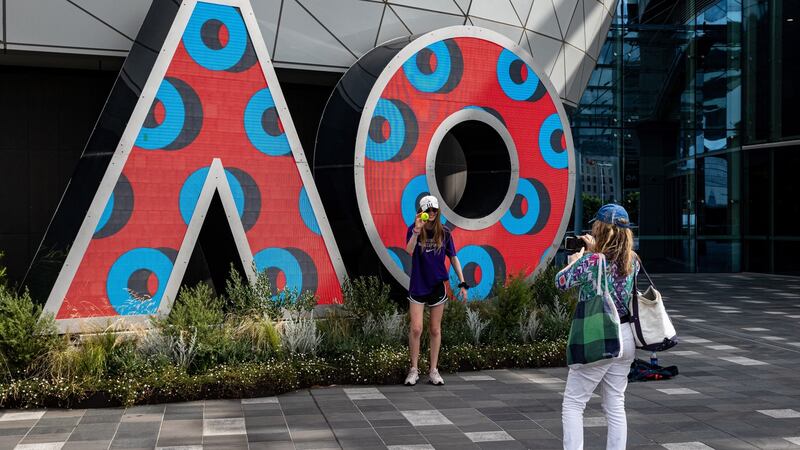Just under a year ago, as Tennis Australia attempted to pull off the seemingly impossible feat of successfully beckoning the world of tennis through the closed borders of Australia in order to hold the 2021 Australian Open, numerous leading figures in Australia framed the necessity of holding the tournament in existential terms.
Craig Tiley, Tennis Australia’s CEO, warned of the possibility of the event being bought out by other entities if it was not held.
Dan Andrews, the Victorian Premier, mentioned imaginary potential bids from China and Japan. Ultimately, Tiley offered the most confusing assessment: “The only reason we get the players here is because we offer a lot of prize money and we spend a lot of time pursuing them to come,” he said.

Such claims were always absurd and likely a negotiation tactic by Tiley. There was certainly a time when the Australian Open was the ugly duckling of the Grand Slam tennis tournaments, held at the end of the year and an event that many of the top players routinely skipped.
But in recent years, the Australian Open has risen to join the other three major tournaments as an essential part of the calendar. What it may lack in historic prestige, it has more than made up for in the manner that it has remained ahead of the curve, constantly looking to modernise, expanding its vast tournament grounds while becoming one of the players’ favourite destinations in the process.
While its improved standing in the tennis world should have enabled the tournament to stand confidently in its success, the efforts Tiley and Tennis Australia evidently went through to provide a pathway for Novak Djokovic into the country, so that he could compete for his 21st Grand Slam title despite being unvaccinated, have spectacularly backfired.
Instead of being a tournament that does not rely on its stars, this year’s Australian Open is already bound to be remembered as the event that allowed itself to be defined and commanded by one single player who has completely overshadowed the rest of the field.
That was already clear over the past week in which Djokovic’s detention and ongoing legal battles have led international news cycles around the world. And it was even more evident on Friday as Alex Hawke, the immigration minister, finally made his decision on Djokovic’s visa after days of deliberation. Hawke predictably opted to use his personal ministerial powers in order to revoke Djokovic’s visa for a second time.
Before this week, the federal circuit and family court of Australia did not even use YouTube to broadcast its hearings, yet on more than 50,000 people watched the directions hearing live on YouTube, many onlookers returning to watch round two of proceedings despite how dry and often incomprehensible Djokovic’s initial hearing was last week.
Court case
Djokovic’s presence now looms over the Australian Open in many ways. In practical terms, many things are uncertain in the men’s draw until his status is clear.
Under normal circumstances, aside from in the case of last minute retirements, every player in the draw would now know their first round opponent and would begin to prepare accordingly. But here numerous players involved will only have clarity about who they face once Djokovic’s court case is resolved.
As things stand, should Djokovic fail to reinstate his visa before Tennis Australia issues the opening day’s order of play, his withdrawal would cause a last minute reshuffle of the draw.
The fifth seed, Andrey Rublev, would move into Djokovic’s spot at the top of the draw, Gael Monfils, the 17th seed, would take Rublev’s spot, Alexander Bublik would become the 33rd seed in Monfils’ spot and there would be a lucky loser added to the draw.
What seems increasingly likely, however, is that a final decision will not be made until after the order of play is released on Sunday. If Djokovic is deported, a lucky loser would replace him at the top of the draw, leading to an extremely lopsided tournament draw.
The days before a major tournament are supposed to be a time of rising hype and excitement, yet it is already clear that Djokovic’s court proceedings will command all attention throughout the weekend.
As the news broke about Djokovic’s visa being cancelled for a second time, Andy Murray was in the midst of a masterful performance as he defeated Reilly Opelka to reach the final of in Sydney, just his second ATP final since 2017, three years after he had seemingly announced his retirement in Australia.
Murray has been one of Djokovic’s closest rivals and his opinion on Djokovic’s predicament is important. However, his visible exasperation after being asked about Djokovic following was understandable: “It [Djokovic’s detention] is not great for tennis, because we are talking about other stuff and politics and all of those things. I would rather be talking about how delighted and happy I am that I’m back in the final of a tournament again,” he said.
He still gave a full and considered answer on the subject.
This has been a common sentiment throughout this week. Rublev, who will move into Djokovic’s spot should the top seed be deported before the order of play, and who himself was initially sceptical about vaccination earlier in the year, said as much.
“I can only shrug my shoulders and regret that instead of tennis, everyone is discussing these things,” he said.
Whether Djokovic’s visa is reinstated by the start of the tournament or if his deportation is confirmed, his shadow will linger over this tournament until the end.
Tennis Australia will likely be changed by their own role in this debacle, but however they come out of this, they would be better served understanding that one no player should ever be bigger than a Grand Slam tournament. Doing so only undermines the rest. – Guardian
















